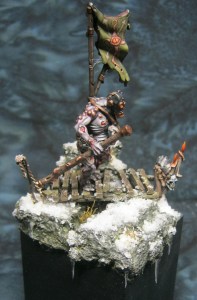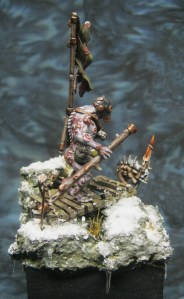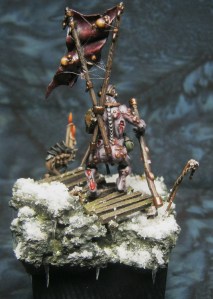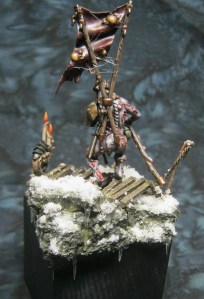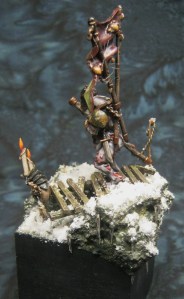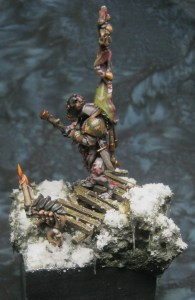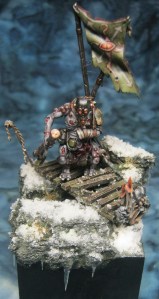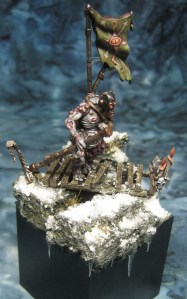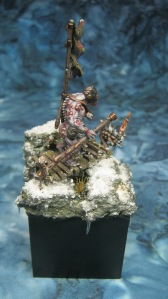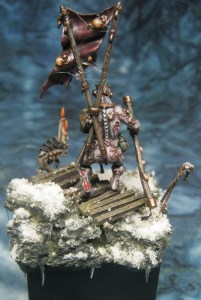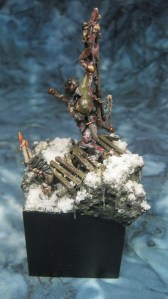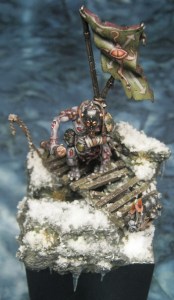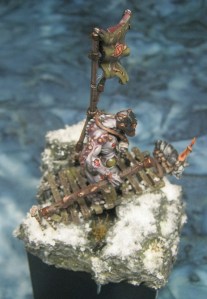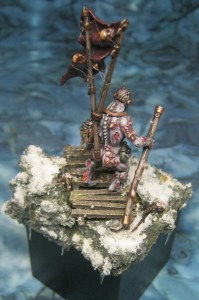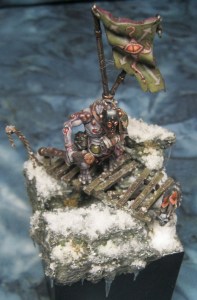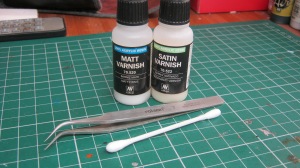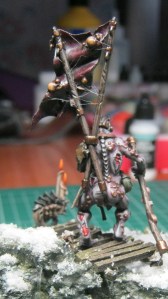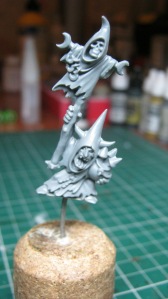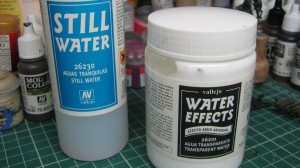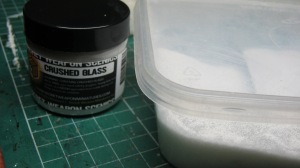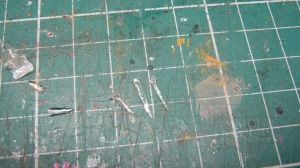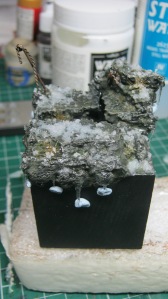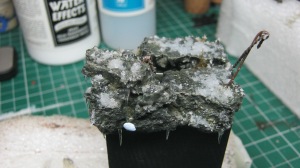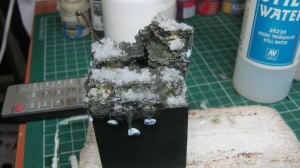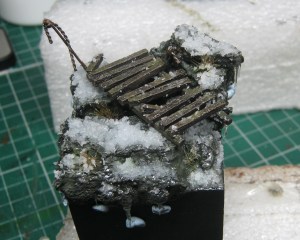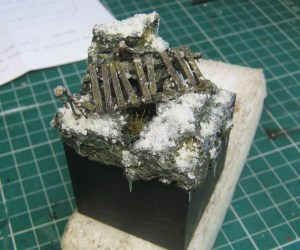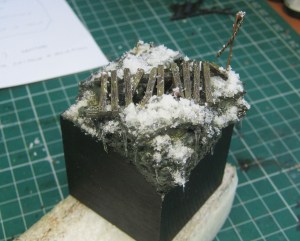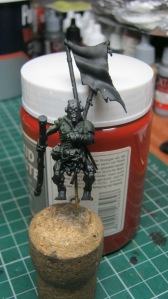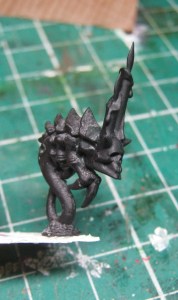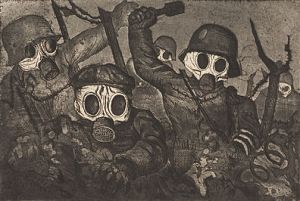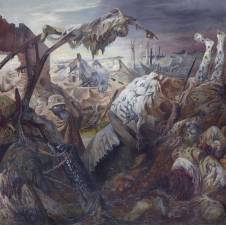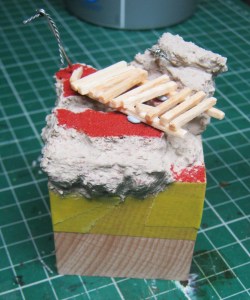I’ve finished one of the small projects I began during the Christmas holiday – the colours haven’t come out quite right in the photos, perhaps due to the white snow:
The method for painting the free-hand design on the banner was pretty much the same step-by-step process as outlined in a previous post.
How to make cobwebs
You need varnish (either matt or satin will do), some cotton from a Q-Tip, and a pair of tweezers:
I didn’t want to paint a free-hand design on the back of the banner, as it would have looked very crowded; so attached some plague boils, and rather than make slime-strands, opted to add cobwebs instead.
First, take some thin strands of the cotton, and use a paint brush and a small amount of water to brush them into place:
While the water is still wet, dab the cotton with varnish in order to make it adhere:
It’s best to let one set of strands dry before adding another, as it’s easy to knock them out of place – and this can be a quite painstaking procedure, as it is:
If you want the threads to glisten, paint them with satin varnish. I didn’t want that effect here, so simply left them matt.
I’m going to paint a night-goblin shaman next, as another small project, before moving onto something more complex:
While the Mountaineer was intended to have a very minimal, drab colour-palette, I want to make this one an exercise in vivid colour.

